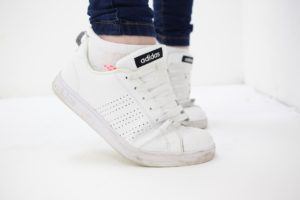
What is Toe-Walking?
Toe-walking is when a person is walking on the balls of their feet with no heel contact with the ground – a normal gait pattern has the heel of the foot coming into contact with the ground first. A toe-walker presents with the ball of their foot coming into contact with the ground first and does not put their heel down at all.
Why is this bad?
toe-walking consistently over a long period of time can cause ankle contractions and decreased range of motion in the ankles and feet. Left untreated this can lead to back, leg, foot/ankle pain, decreased balance, and delayed gross motor skills.
What causes Toe-Walking?
toe-walking is associated with many disorders such as autism, cerebral palsy, and muscular dystrophy. Toe-walking can also be idiopathic with no associated diagnosis.
When should you seek treatment?
If the child has been independently walking for more than 3 months, is consistently toe-walking 80% or more of the time, and has demonstrated toe-walking for 4 weeks or more, a physical therapy evaluation is recommended. Children that demonstrate toe-walking should be referred to physical therapy as early as 2 years old.
How is Toe-walking Treated?
physical therapy, stretches, exercises/activities, orthotics/night stretching braces, serial casting
Can a child grow out of toe-walking without physical therapy?
no, toe-walking requires intervention to be corrected.
Sala, Debra A. "Idiopathic Toe-Walking: A Review from 1967 to 2021." Journal of Pediatric Neurology (2022)
Barkocy, Marybeth, et al. "The Effectiveness of Serial Casting and Ankle Foot Orthoses in Treating Toe Walking in Children With Autism Spectrum Disorder." Pediatric Physical Therapy 33.2 (2021): 83-90.
Berger, N., et al. "Orthotic treatment of idiopathic toe walking with a lower leg orthosis with circular subtalar blocking." BMC musculoskeletal disorders 22.1 (2021): 1-8.
McHugh, Jessica J., et al. "Idiopathic toe walking and postural instability: The next step." Annals of International Occupational Therapy 4.3 (2021): e109-e116.
 Skip to content
Skip to content